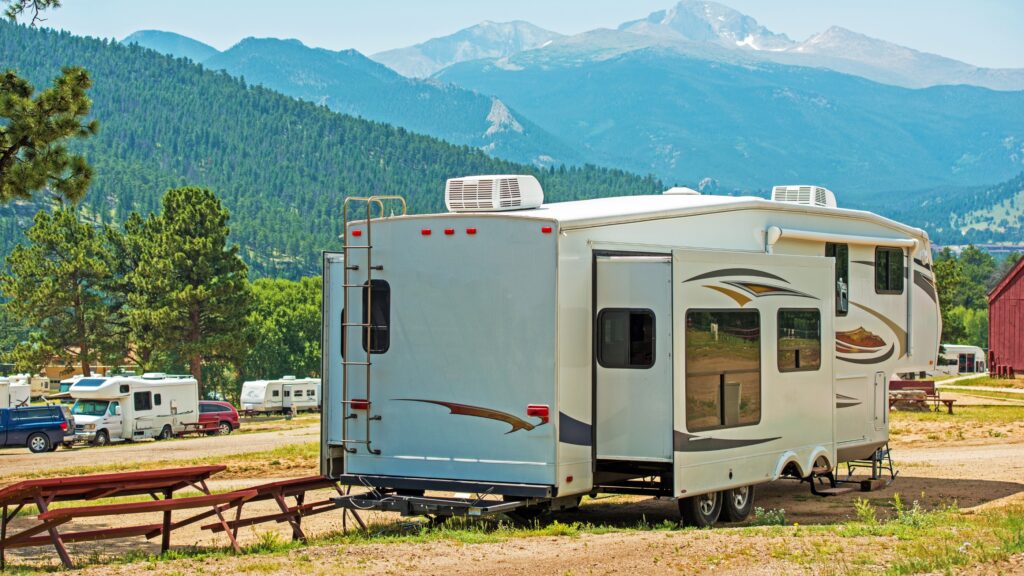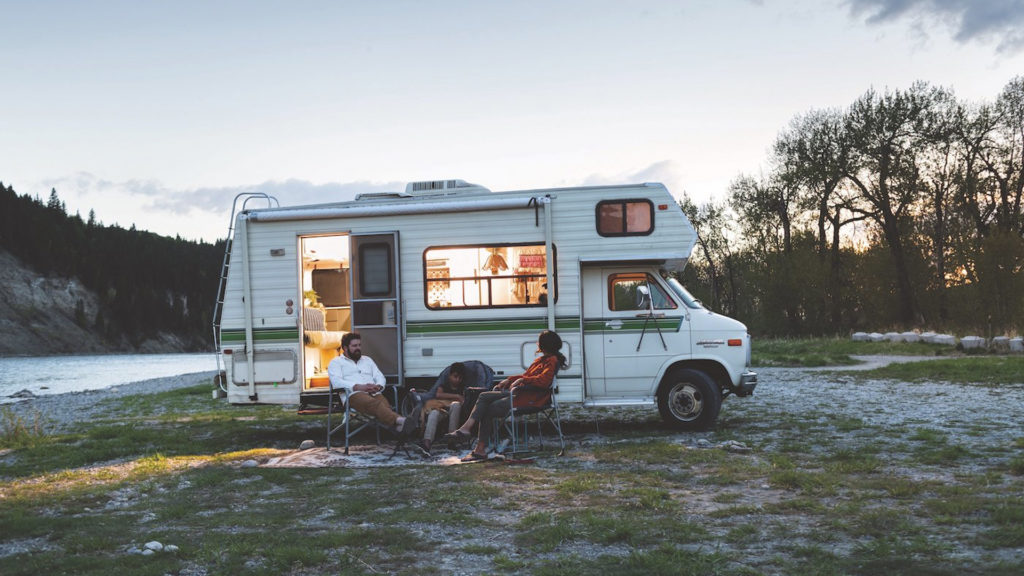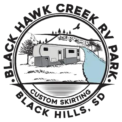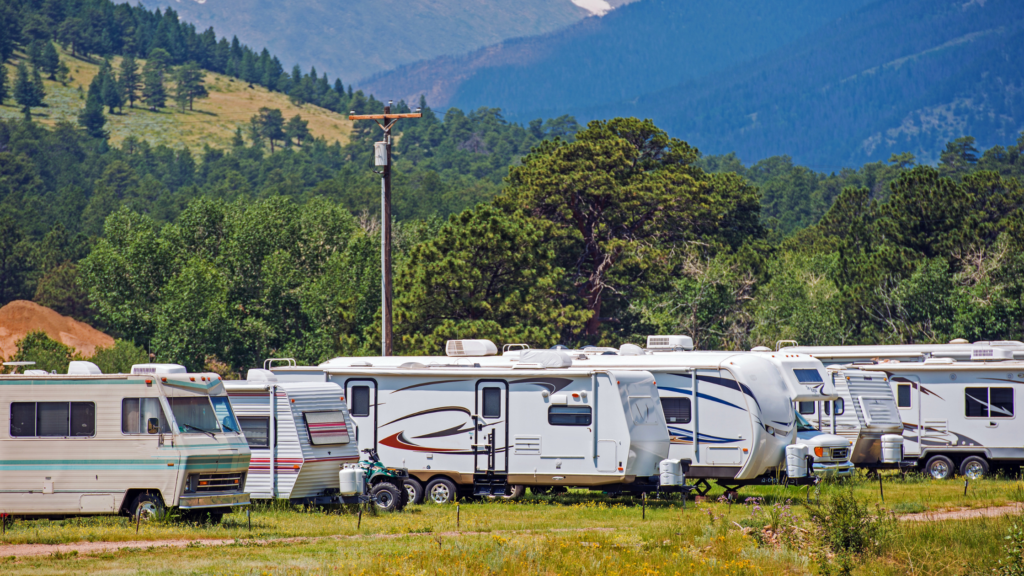Table of contents
Are you dreaming of hitting the open road in your very own recreational vehicle? A used RV might be the perfect solution for adventurers looking to explore without breaking the bank. This comprehensive used RV buying guide will walk you through everything you need to know about how to buy a used RV, what to look for when buying a used RV, and how to make the smartest decision for your lifestyle and budget. Whether you’re a seasoned traveler or a first-time RV enthusiast, navigating the world of pre-owned recreational vehicles can be daunting. That’s why we’ve created this in-depth used RV buyers guide to help you make an informed decision. From understanding different types of RVs to negotiating the best price, we’ll cover all aspects of buying a used RV to ensure you drive away with the perfect home on wheels.
Understanding Different Types of RVs
Before diving into the specifics of buying a used RV in this buyers guide, it’s essential to understand the various classes and types available. Each category has its own set of advantages and considerations:
- Class A Motorhomes:
- Largest and most luxurious
- Built on a commercial truck chassis
- Offer spacious living areas and high-end amenities
- Typically 25-45 feet in length
- Class B Motorhomes (Campervans):
- Compact and easy to drive
- Built on a van chassis
- Ideal for solo travelers or couples
- Usually 16-22 feet long
- Class C Motorhomes:
- Built on a truck chassis with an attached cab section
- Offer a good balance of amenities and maneuverability
- Typically 20-33 feet in length
- Fifth Wheel Trailers:
- Towed by a pickup truck with a special hitch in the truck bed
- Offer spacious living areas and multiple slide-outs
- Range from 25-45 feet in length
- Travel Trailers:
- Towed by various vehicles with a standard hitch
- Wide range of sizes and layouts available
- Can be as small as 13 feet or as large as 40 feet
- Pop-up Campers:
- Lightweight and collapsible
- Easy to tow and store
- Limited amenities but great for occasional use
When considering what to look for when buying a used RV, keep in mind how each type aligns with your travel style, towing capacity, and desired amenities.

Benefits of Buying a Used RV
Opting for a pre-owned RV comes with several advantages that make it an attractive option for many buyers:
- Lower Initial Costs: Used RVs are significantly less expensive than new models, allowing you to get more features for your budget.
- Reduced Depreciation: New RVs can lose 20-30% of their value in the first year. By buying used, you avoid this steep initial depreciation.
- More Bang for Your Buck: You may be able to afford a higher-end model or more luxurious features when buying used.
- Real-World Testing: Used RVs have been road-tested, revealing any potential issues or quirks that may not be apparent in a new model.
- Customization Opportunities: Many used RVs come with aftermarket upgrades or modifications that can add value.
- Lower Insurance Costs: Insuring a used RV is typically less expensive than coverage for a new model.
When approaching how to buy a used RV, keep these benefits in mind as you weigh your options and set your budget.
Key Factors to Consider When Buying a Used RV
Age and Mileage
When buying a used RV, age and mileage are crucial factors to look for:
- Age: Older RVs may have more wear and tear but can also be more affordable. Look for models less than 10 years old for a good balance of price and condition.
- Mileage: For motorized RVs, lower mileage is generally better. However, extremely low mileage on an older RV might indicate prolonged periods of disuse, which can lead to its own set of problems.
Condition and Maintenance History
A well-maintained RV can provide years of reliable service:
- Request maintenance records and service history
- Look for signs of regular upkeep and timely repairs
- Be wary of RVs with long periods of inactivity or storage
Layout and Amenities
Consider your lifestyle and travel needs:
- Number of sleeping areas
- Kitchen facilities
- Bathroom size and features
- Storage capacity
- Entertainment systems
Brand Reputation
Research different RV brands and their reputations for quality and customer service:
- Read owner reviews and forums
- Check reliability ratings
- Consider the availability of parts and service for specific brands
Price and Market Value
Understanding the market value of used RVs is crucial:
- Use NADA Guides and RV Trader to research prices
- Consider the RV’s age, condition, and features when assessing value
- Be prepared to negotiate based on market trends and the RV’s condition
By carefully evaluating these factors, you’ll be better equipped to make an informed decision when buying a used RV.
Inspection Checklist for Used RVs
A thorough inspection is crucial when considering what to look for when buying a used RV. Here’s a comprehensive checklist to guide you:
Exterior Inspection:
- Roof condition (check for cracks, soft spots, or signs of leaks)
- Wall integrity (look for delamination or water damage)
- Seals and caulking around windows, doors, and slide-outs
- Tires (age, wear, and alignment)
- Undercarriage (rust, damage, or signs of leaks)
- Awnings and slide-out mechanisms
Interior Inspection:
- Flooring (soft spots or water damage)
- Walls and ceiling (stains or warping indicating leaks)
- Cabinets and storage areas (functionality and condition)
- Appliances (refrigerator, stove, microwave, air conditioner)
- Plumbing system (check for leaks and test water pressure)
- Electrical system (test all outlets, lights, and 12V systems)
- Furnace and water heater operation
Mechanical Assessment (for motorized RVs):
- Engine and transmission condition
- Brake system
- Suspension
- Generator (if equipped)
Additional Considerations:
- Odors (mold, mildew, or other concerning smells)
- Signs of pest infestation
- Documentation (title, registration, maintenance records)
While this used RV buying guide provides a solid foundation, it’s highly recommended to have a professional RV inspector perform a thorough examination before finalizing your purchase. Their expertise can uncover issues that may not be immediately apparent and provide valuable insights into the overall condition of the RV.

Financing and Insurance Considerations
When buying a used RV, understanding your financing options and insurance requirements is crucial:
Financing Options:
- RV-specific loans: Often offer longer terms and lower interest rates
- Personal loans: May be an option for less expensive RVs
- Home equity loans: Can provide favorable rates if you have significant home equity
Consider the following when financing a used RV:
- Loan terms typically range from 10-20 years
- Interest rates may be higher for used RVs compared to new models
- A larger down payment can help secure better terms
Insurance Considerations:
RV insurance is essential and often required by lenders. Common coverage types include:
- Comprehensive coverage
- Collision coverage
- Liability protection
- Personal property coverage
- Roadside assistance
Factors affecting insurance costs:
- RV type and value
- Your driving record and claims history
- Where and how often you use the RV
When buying a used RV, be sure to factor in these ongoing costs to your budget.
Negotiating the Purchase
Effective negotiation is a key aspect of how to buy a used RV. Here are some strategies to help you get the best deal:
- Research market values: Use resources like NADA Guides and RV Trader to understand fair pricing.
- Identify leverage points: Use the RV’s condition, market trends, and your inspection findings to justify your offer.
- Be prepared to walk away: Don’t get emotionally attached; be willing to look for other options if the price isn’t right.
- Consider timing: Buying during the off-season or end of the model year can lead to better deals.
- Bundle extras: Negotiate for included accessories, extended warranties, or service packages.
- Get offers in writing: This can be useful when negotiating with multiple sellers.
- Be respectful but firm: Maintain a positive attitude while clearly stating your position.
Remember, the goal is to find a fair price that works for both you and the seller. With patience and preparation, you can secure a great deal on your used RV.
Best Times to Buy a Used RV
Timing can significantly impact your success when buying a used RV. Consider these factors from our used RV buyers guide:
- Fall and winter: As the camping season ends, many owners look to sell, potentially leading to better deals.
- Early spring: Some sellers may be motivated to upgrade before the new season begins.
- End of month or quarter: Dealerships may be more willing to negotiate to meet sales targets.
- During economic downturns: RV sales often decline, creating opportunities for buyers.
Keep in mind that the best time to buy also depends on your local market and individual circumstances. Being flexible with your timeline can help you take advantage of optimal buying conditions.
Common Pitfalls to Avoid
As you navigate the process of buying a used RV, take a look at these common mistakes:
- Skipping the professional inspection: Don’t rely solely on your own assessment.
- Overlooking hidden costs: Factor in maintenance, storage, and fuel expenses.
- Buying more RV than you need: Be realistic about your usage and space requirements.
- Neglecting to check for recalls or known issues: Research the specific model for any recurring problems.
- Failing to test drive: Always take the RV for a spin to assess its handling and comfort.
- Rushing the decision: Take your time to find the right RV at the right price.
- Ignoring the importance of a good warranty: Consider purchasing an extended warranty for added peace of mind.
- Not checking the vehicle’s history: Use services like CarFax to uncover any accidents or major repairs.
Start Your RV Adventure at Black Hawk Creek RV Park
Congratulations on taking the first step towards RV ownership with this used RV buyers guide! Now that you’re armed with the knowledge to make a smart purchase, it’s time to start planning your inaugural adventure. Why not begin your journey at the perfect home base for exploring South Dakota’s most iconic attractions?
Black Hawk Creek RV Park & Cabins offers the ideal starting point for your new RV lifestyle. Here’s why it should be your first destination:
- Prime Location: Just 2 miles from the interstate and a 5-minute drive from Rapid City, you’ll have easy access to urban amenities while enjoying a serene RV park setting.
- Year-Round Accessibility: No matter when you buy your RV, Black Hawk Creek is ready to welcome you in any season.
- Diverse Accommodations: Test out your new (to you) RV in spacious, well-maintained sites designed for comfort and convenience.
- Gateway to Adventure: You’re within easy driving distance of Mount Rushmore, Crazy Horse, Custer State Park, Badlands National Park, Devils Tower, and the historic town of Deadwood.
- Perfect for All Travel Styles: Whether you’re planning a quick getaway or an extended stay, Black Hawk Creek caters to all types of travelers.
Don’t wait to put your new RV purchase to good use. Book your stay at Black Hawk Creek RV Park & Cabins today and embark on the RV adventure you’ve been dreaming of. It’s time to hit the road and create lasting memories in the heart of South Dakota’s stunning landscapes!
Ready to start your journey? Visit Black Hawk Creek’s website or call [insert phone number] to reserve your spot now. Your ultimate RV experience awaits!

